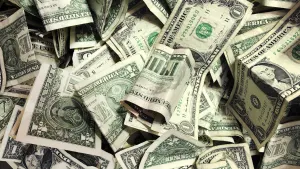US employers keep hiring at solid pace, adding 261,000 jobs
U.S. employers added a solid 261,000 jobs in October in face of surging rate hikes by Fed.
Share:
More Stories
3:04

Main Street Connecticut: Showcasing all the top stops in Westport
18h ago0:26

5 Powerball tickets in Connecticut hit for $50K or more
2ds ago2:17

Milford ranked third-best town in the country to retire in for upper-middle class
2ds ago0:19

Rocky Road inspired cookie joining 2026 Girl Scout cookie lineup
2ds ago
Ford recalling almost 1.5 million vehicles in US due to rear view camera issue
3ds ago1:14

Le Creuset apologizes to customers following mystery boxes’ controversy
3ds ago3:04

Main Street Connecticut: Showcasing all the top stops in Westport
18h ago0:26

5 Powerball tickets in Connecticut hit for $50K or more
2ds ago2:17

Milford ranked third-best town in the country to retire in for upper-middle class
2ds ago0:19

Rocky Road inspired cookie joining 2026 Girl Scout cookie lineup
2ds ago
Ford recalling almost 1.5 million vehicles in US due to rear view camera issue
3ds ago1:14

Le Creuset apologizes to customers following mystery boxes’ controversy
3ds agoAmerica’s employers kept hiring briskly in October, adding a substantial 261,000 positions, a sign that as Election Day nears, the economy remains a picture of solid job growth and painful inflation.
Friday’s government report showed that last month’s hiring remained near the robust pace it has maintained in the two-plus years since the pandemic recession ended. The unemployment rate rose to 3.7% from a five-decade low of 3.5%.
A strong job market is deepening the challenges the Federal Reserve faces as it raises interest rates at the fastest pace since the 1980s to try to bring inflation down from near a 40-hear high. Steady hiring, solid pay growth and a low unemployment rate have been good for workers. But they have also contributed to rising prices.
The October jobs figures were the last major economic report before Election Day, with voters keenly focused on the state of the economy and on their own financial lives.
Chronic inflation is hammering the budgets of many households and has shot to the top of voter concerns in the midterm congressional elections that will end Tuesday. Republican candidates across the country have attacked Democrats over inflation in their drive to regain control of Congress.
All the jobs that employers have added since the recession ended have boosted the ability of consumers to keep spending, even amid high inflation. A labor shortage in many areas of the economy also compelled businesses to pay more to attract and keep workers.
President Joe Biden and congressional Democrats have pointed to the vigorous resurgence in hiring as evidence that their policies have helped get Americans back to work faster than the nation managed to do after previous downturns. But that message has been overtaken in the midterm political campaigns by the crushing surge of inflation, which has soured many Americans on the economy under Democratic leadership in Congress and the White House.
Signs are growing that the economy has begun to flag under the weight of much higher borrowing costs engineered by the Fed’s aggressive interest rate hikes. Especially in industries like housing and technology, hiring has waned. Some tech companies, like the ride-hailing firm Lyft and the payment company Stripe. have announced plans to lay off workers. Amazon said Thursday it would suspend its corporate hiring.
Still, despite such high-profile announcements, the pace of layoffs across the broader economy remains unusually low. And companies in travel, restaurants, manufacturing and health care are still hiring steadily. Southwest Airlines told investors last week that it was on track to hire 10,000 employees this year, including 1,200 pilots. Laboratory Corporation of America said it plans significant hiring.
At a news conference Wednesday, Fed Chair Jerome Powell noted that the strong job market is feeding inflationary pressures as businesses continue to raise pay. In September, average wages rose more than 6% from 12 months earlier, according to the Federal Reserve Bank of Atlanta. That was the fastest such pace in 40 years, though it still trailed inflation.
Wages tend to follow inflation higher as workers seek to keep up with price increases. Those pay raises, in turn, can keep inflation high if companies pass on at least part of their higher labor costs to their customers in the form of higher prices.
Powell spoke after the Fed announced a fourth straight three-quarter-point increase in its benchmark rate. It was the latest in a series of unusually large hikes that have made mortgages and other consumer and business loans increasingly costly and heightened the risk of a recession.
The Fed’s policymakers did open the door to the possibility of a smaller rate hike when they next meet in December. But Powell also said that in order to tame inflation, the Fed would likely have to raise rates high enough to weaken the job market. That could mean that hiring will slow in coming months or even that many employers will cut jobs and increase the unemployment rate.
So far this year, the Fed has raised its key short-term rate six times - from near zero in early March to a range of 3.75% to 4%, the highest level in 14 years.
Housing has, so far, absorbed the worst damage from higher borrowing costs. The Fed’s rate hikes have sent average long-term mortgage rates surging to around 7%, the highest level in two decades. Home sales have cratered as a result, and once-soaring home prices have started to slow.
For now, the economy is still growing. It expanded at a 2.6% annual rate in the July-September quarter after having contracted in the first six months of the year. But much of last quarter’s growth was due to a spike in U.S. exports. By contrast, consumers - the primary driver of the economy - only modestly increased their spending beyond the rate of inflation.
With inflation still painfully high and the Fed making borrowing increasingly expensive for consumers and businesses, most economists expect a recession by early next year.
More from News 12
1:28

5 simple steps for long-term benefits to your health and heart
1:32

8 tips for working safely during hot weather
3:31

Guide: Ways to set your child up for financial success
3:18

Guide: The importance of good sleep and how to get it

Guide: Mental health resources available in the tri-state
9:36
